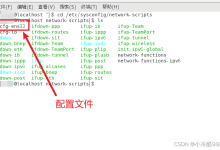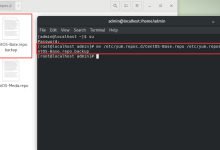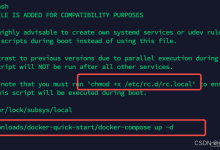
1、安装jdk
?
|
1
2
3
4
5
6
7
8
9
10
11
12
13
14
15
16
17
18
19
20
21
|
#查看系统自带的jdk
[root@localhost ~]# rpm -qa | grep jdk
java-1.7.0-openjdk-1.7.0.79-2.5.5.4.el6.x86_64
java-1.6.0-openjdk-1.6.0.35-1.13.7.1.el6_6.x86_64
#卸载系统自带openjdk
[root@localhost ~]# rpm -e --nodeps java-1.6.0-openjdk-1.6.0.35-1.13.7.1.el6_6.x86_64
[root@localhost ~]# rpm -e --nodeps java-1.7.0-openjdk-1.7.0.79-2.5.5.4.el6.x86_64
#查看jdk版本
[root@localhost ~]# java -version
-bash: /usr/bin/java: 没有那个文件或目录
#ok,卸载成功!
#下面安装我们自己的jdk
#自己去下载
[root@localhost ~]# cd /usr/local/java/jdk
#查看目录文件
[root@localhost java]# ls
jdk-7u79-linux-x64.tar.gz
#解压
[root@localhost jdk]# tar -zxvf jdk-7u79-linux-x64.tar.gz
#授权
[root@localhost jdk]# chmod +x jdk1.7.0_79/
|
配置环境变量,(稍后和tomcat一起配置)
2.安装tomcat
下载目录:tomcat7下载地址
?
|
1
2
3
4
5
6
7
|
#查看
[root@localhost java]# ls tomcat/
apache-tomcat-7.0.29.tar.gz
#解压
[root@localhost tomcat]# tar -zxvf apache-tomcat-7.0.29.tar.gz
#授权
[root@localhost jdk]# chmod +x apache-tomcat-7.0.29
|
3、配置环境变量
?
|
1
2
3
4
5
6
7
|
#编辑profile文件:vim /etc/profile
exportJAVA_HOME=/usr/local/java/jdk/jdk1.7.0_79
exportCALSSPATH=$JAVA_HOME/lib/*.*
exportPATH=$PATH:$JAVA_HOME/bin
exportTOMCAT_HOME=/usr/local/java/tomcat/apache-tomcat-7.0.29
exportCATALINA_HOME=/usr/local/java/tomcat/apache-tomcat-7.0.29
#保存文件并退出!
|
注意:等号前后没有空格
?
|
1
2
3
4
5
6
7
8
9
10
11
12
13
14
15
16
17
18
19
20
|
#使设置立即生效:
[root@localhost jdk]# source /etc/profile
#查看jdk是否安装成功
[root@localhost jdk]# java -version
java version "1.7.0_79"
Java(TM) SE Runtime Environment (build 1.7.0_79-b15)
Java HotSpot(TM) 64-Bit Server VM (build 24.79-b02, mixed mode)
#成功!
#启动tomcat
[root@localhost bin]# sh /usr/local/java/tomcat/apache-tomcat-7.0.29/bin/startup.sh
#查看启动日志
[root@localhost bin]# tail -f /usr/local/java/tomcat/apache-tomcat-7.0.29/logs/catalina.out
#访问tomcat
http://192.168.81.115:8080/
#如果访问不了,要开启防火墙
#打开防火墙端口命令
#开启8080端口
[root@localhost bin]# /sbin/iptables -I INPUT -p tcp --dport 8080 -j ACCEPT
#再次访问tomcat
http://192.168.81.115:8080/
|
OK!
4、安装aapt
下载目录:
aapt下载
?
|
1
2
3
4
5
6
7
8
9
10
11
12
13
14
15
16
17
18
19
20
21
22
23
24
25
26
27
28
29
30
31
32
33
34
35
36
37
38
39
40
41
42
43
44
45
46
47
48
49
50
51
52
53
54
55
56
57
58
59
60
61
62
63
64
65
66
67
68
69
70
71
72
73
74
75
76
77
78
79
80
81
82
83
84
85
86
87
88
89
90
91
92
93
94
95
96
97
98
99
100
101
102
103
104
105
106
107
108
109
110
111
112
113
114
115
116
117
118
119
120
121
122
123
124
125
126
127
128
129
130
131
132
133
134
135
136
137
138
139
140
141
142
143
144
|
apktool.jar下载
#授权
[root@localhost apktool]# chmod +x aapt
#执行
[root@localhost apktool]# ./aapt
-bash: ./aapt: /lib/ld-linux.so.2: bad ELF interpreter: 没有那个文件或目录
#那么在64位操作系统下去执行./aapt命令的话会报以上错误
#我们需要安装:glibc.i686,zlib.i686,libstdc++.i686
#(1.)第一步
[root@localhost apktool]# yum install glibc.i686
[root@localhost apktool]# ./aapt
#./aapt: error while loading shared libraries: libz.so.1: cannot open shared object file: No such file or directory
#(2.)第二步
[root@localhost apktool]# sudo yum install zlib.i686
[root@localhost apktool]# ./aapt
#./aapt: error while loading shared libraries: libstdc++.so.6: cannot open shared object file: No such file or directory
#(3.)第三步
[root@localhost apktool]# sudo yum install libstdc++.i686
#运行./aapt version看看是否安装成功
[root@localhost apktool]# ./aapt version
#Android Asset Packaging Tool, v0.2
#如果出现以上说明安装成功,或者可以执行运行./aapt,如果出现一大坨和最下面的相同的东西说明成功;如果还是报错,就继续往下走
#(4.)第四步
[root@localhost apktool]# ./aapt
#看最后一句
#Protected multilib versions: libstdc++-4.4.7-17.el6.i686 != libstdc++-4.4.7-16.el6.x86_64
#如果报错的话需要升级 != 后面的版本,执行
[root@localhost apktool]# yum update libstdc++-4.4.7-16.el6.x86_64
[root@localhost apktool]# ./aapt
#./aapt: error while loading shared libraries: libstdc++.so.6: cannot open shared object file: No such file or directory
#还是报错,继续
#(5.)第五步
[root@localhost apktool]# yum install libstdc++.so.6
[root@localhost apktool]# ./aapt
Android Asset Packaging Tool
Usage:
aapt l[ist] [-v] [-a] file.{zip,jar,apk}
List contents of Zip-compatible archive.
aapt d[ump] [--values] WHAT file.{apk} [asset [asset ...]]
badging Print the label and icon forthe app declared inAPK.
permissions Print the permissions from the APK.
resources Print the resource table from the APK.
configurations Print the configurations inthe APK.
xmltree Print the compiled xmls inthe given assets.
xmlstrings Print the strings of the given compiled xml assets.
aapt p[ackage] [-d][-f][-m][-u][-v][-x][-z][-M AndroidManifest.xml] \
[-0 extension [-0 extension ...]] [-g tolerance] [-j jarfile] \
[--debug-mode] [--min-sdk-version VAL] [--target-sdk-version VAL] \
[--app-version VAL] [--app-version-name TEXT] [--custom-package VAL] \
[--rename-manifest-package PACKAGE] \
[--rename-instrumentation-target-package PACKAGE] \
[--utf16] [--auto-add-overlay] \
[--max-res-version VAL] \
[-I base-package [-I base-package ...]] \
[-A asset-source-dir] [-G class-list-file] [-P public-definitions-file] \
[-S resource-sources [-S resource-sources ...]] [-F apk-file] [-J R-file-dir] \
[--product product1,product2,...] \
[raw-files-dir[raw-files-dir] ...]
Package the android resources. It will readassets and resources that are
supplied with the -M -A -S or raw-files-dirarguments. The -J -P -F and -R
options control whichfiles are output.
aapt r[emove] [-v] file.{zip,jar,apk} file1 [file2 ...]
Delete specified files from Zip-compatible archive.
aapt a[dd] [-v] file.{zip,jar,apk} file1 [file2 ...]
Add specified files to Zip-compatible archive.
aapt v[ersion]
Print program version.
Modifiers:
-a print Android-specific data (resources, manifest) when listing
-c specify whichconfigurations to include. The default is all
configurations. The value of the parameter should be a comma
separated list of configuration values. Locales should be specified
as either a language or language-region pair. Some examples:
en
port,en
port,land,en_US
If you put the special locale, zz_ZZ on the list, it will perform
pseudolocalization on the default locale, modifying all of the
strings so you can lookforstrings that missed the
internationalization process. For example:
port,land,zz_ZZ
-d one or moredevice assets to include, separated by commas
-f force overwrite of existing files
-g specify a pixel tolerance to force images to grayscale, default 0
-j specify a jar or zip filecontaining classes to include
-k junk path of file(s) added
-m makepackage directories under location specified by -J
-u update existing packages (add new, replace older, remove deleted files)
-vverbose output
-x create extending (non-application) resource IDs
-z require localization of resource attributes marked with
localization="suggested"
-A additional directory inwhichto findraw asset files
-G A fileto output proguard options into.
-F specify the apk fileto output
-I add an existing package to base include set
-J specify where to output R.java resource constant definitions
-M specify full path to AndroidManifest.xml to include inzip
-P specify where to output public resource definitions
-S directory inwhichto findresources. Multiple directories will be scanned
and the first match found (left to right) will take precedence.
-0 specifies an additional extension forwhichsuch files will not
be stored compressed inthe .apk. An empty string means to not
compress any files at all.
--debug-mode
inserts android:debuggable="true"into the application node of the
manifest, making the application debuggable even on production devices.
--min-sdk-version
inserts android:minSdkVersion into manifest. If the version is 7 or
higher, the default encoding forresources will be inUTF-8.
--target-sdk-version
inserts android:targetSdkVersion into manifest.
--max-res-version
ignores versioned resource directories above the given value.
--values
when used with "dump resources"also includes resource values.
--version-code
inserts android:versionCode into manifest.
--version-name
inserts android:versionName into manifest.
--custom-package
generates R.java into a different package.
--auto-add-overlay
Automatically add resources that are only inoverlays.
--rename-manifest-package
Rewrite the manifest so that its package name is the package name
given here. Relative class names (forexample .Foo) will be
changed to absolute names with the old package so that the code
does not need to change.
--rename-instrumentation-target-package
Rewrite the manifest so that all of its instrumentation
components target the given package. Useful when used in
conjunction with --rename-manifest-package to fix tests against
a package that has been renamed.
--product
Specifies whichvariant to choose forstrings that have
product variants
--utf16
changes default encoding forresources to UTF-16. Only useful when API
level is setto 7 or higher where the default encoding is UTF-8.
--non-constant-id
Make the resources ID non constant. This is required to makean R java class
that does not contain the final value but is used to makereusable compiled
libraries that need to access resources.
|
出现以上信息说明安装成功!
这时可以上传一个apk文件,然后执行解析apk
目录:
执行: ./aapt d badging 1.apk
可以看到结果输出的包名、版本号等等信息都解析出来了。
以上所述是小编给大家介绍的Centos 64位安装aapt、jdk、tomcat的详细教程,希望对大家有所帮助,如果大家有任何疑问请给我留言,小编会及时回复大家的。在此也非常感谢大家对服务器之家网站的支持!


























